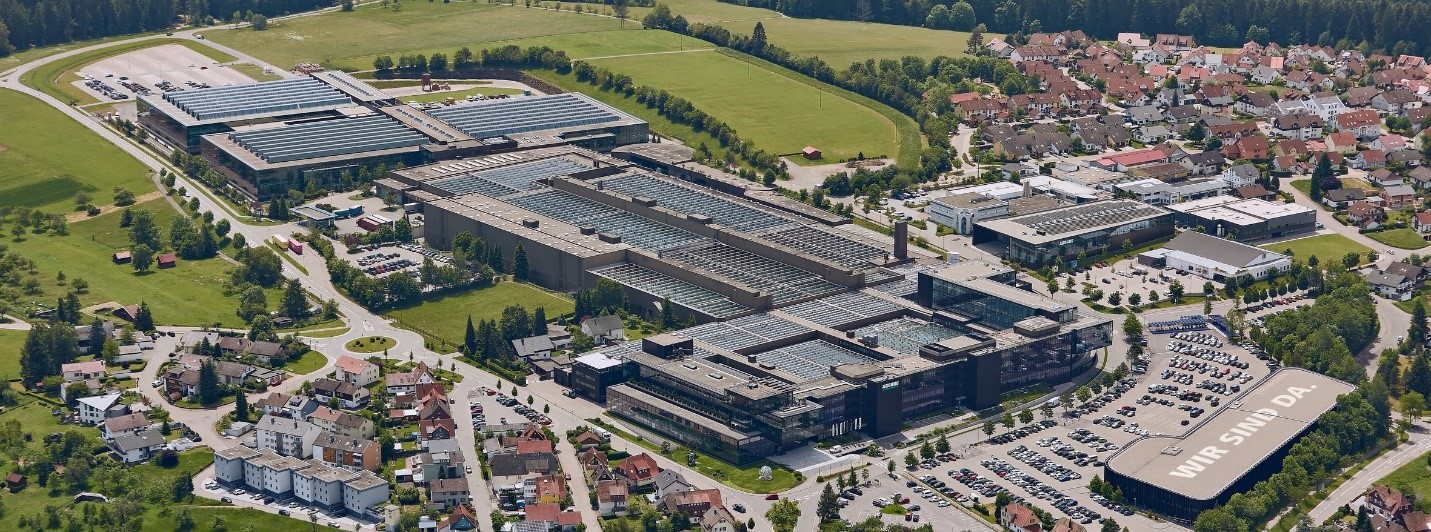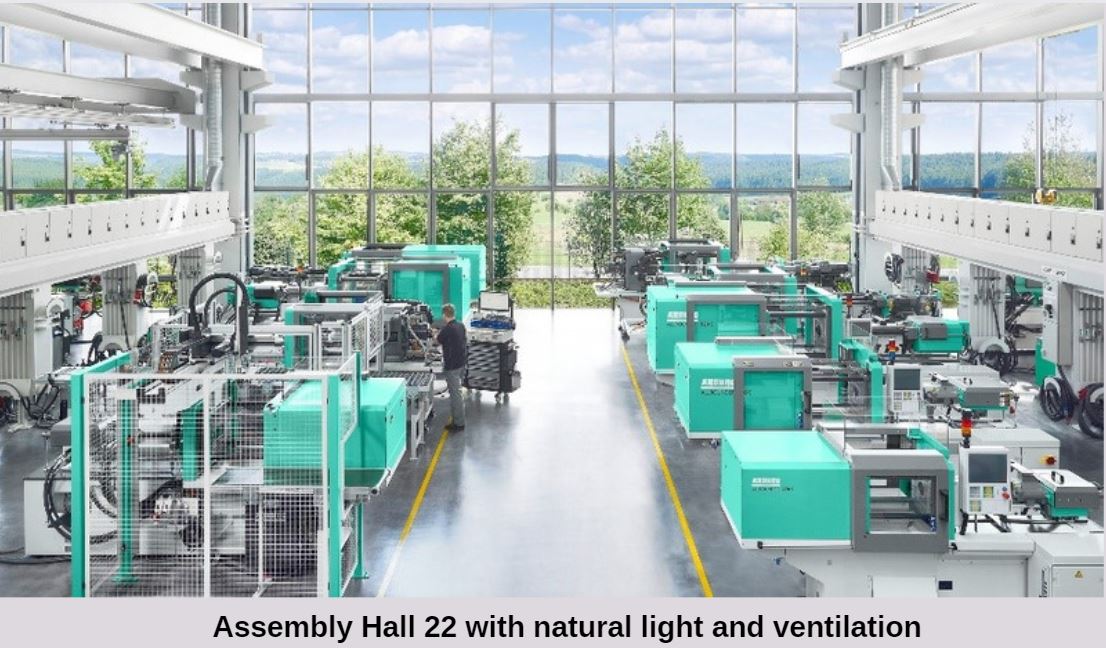
ARBURG ‘walks the talk’ with
their environmental and energy policy
It’s ARBURG’s corporate culture
As an integral part of ARBURG’s corporate culture. … ARBURG’s environmental and energy program contains the strategic and operational objectives for improving environmental protection.
By helping to preserve the natural foundations of life and conserve resources, ARBURG serves the people and nature equally. The analysis of all relevant key figures defines specific, measurable targets and measures that they achieve with their environmental and energy program.
Central and Vertical Manufacturing
One of the most sustainable and fundamental decisions in the company’s history was to produce centrally. The ARBURG production location in Germany is approximately 2 million square feet of floor space with state-of-the-art manufacturing equipment, making injection molding machines and automation for global distribution. With about 60% in-house production, central and vertical manufacturing allows reliable and flexible supply chain management.

Making resources valuable
When ARBURG constructs or renovates buildings, they intend to maximize resource efficiency through these projects. This has been the case since the first significant plant expansion in the 1970s involving the administration building at the German headquarters. In that instance, they implemented a façade heating system, a revolutionary technology for low-temperature heating. A recent example is the construction of the new Training Center. The building areas are air-conditioned via concrete core temperature control and heating/cooling ceilings using waste heat from production. Waste heat from production has multiple uses, which means they have been saving heating energy and reducing carbon emissions for more than 40 years.

Thanks to heat recovery, ARBURG makes multiple uses of the energy supplied and can heat the buildings virtually cost and carbon-neutral. ARBURG has been operating several production halls with almost zero heating energy since the turn of the millennium.
This is achieved utilizing an overarching process heat management system that ARBURG is continuously advancing to control the various heating circuits in the company in an energy-efficient and needs-based way.
Geothermal energy is the use of heating and cooling energy that is stored in the ground and can be accessed there. Geothermal energy is therefore considered to be renewable energy. The portfolio of technologies in use ranges from air heat exchangers, compressed air and power generation using heat recovery to a geothermal system.
Geothermal cooling also enables temperatures of between 57- and 63-degrees Fahrenheit to be achieved, which means that buildings can also be cooled particularly efficiently. ARBURG generates an output of ~ 215,020-kilowatt-hours of cooling and ~ 231,250-kilowatt-hours of heat in this way using minimal resources – which would cover the heating requirements of around 15 single-family homes for a whole year.
Focus on reducing emissions
ARBURG has set clear targets for reducing emissions. Based on the 2012 figures, the total energy requirement should be reduced by five percent by 2023. The share of photovoltaics and geothermal energy as renewable forms of energy should be increased to at least six per cent of the total energy requirement in the same period.
Thanks to the extensive measures taken regarding energy, ARBURG has saved almost 75 million kilograms of CO2 emissions over the past ten years. The share of CO2 emissions from gas at ARBURG only accounts for around 10 per cent of the heating, with the remainder coming from combined heat and power generation. In-house generation accounts for ~ 39 per cent of total electricity requirement, and the trend is rising here.
Sustainable: ARBURG’s electricity mix
The electricity mix is sustainable. In addition to photovoltaics, wind power and combined heat and power, the mix for the location in Lossburg consists of regional electricity and gas purchased from the local public utility company.
The electricity comes from entirely ecological sources, meaning that it consists of 100 per cent carbon-neutral green electricity – and has done so since 2016. ARBURG now produces a considerable share of their electricity via the three pillars of photovoltaics, wind power and combined heat and power (gas).
In recent years the percentage of photovoltaic electricity has been around 1.9 million kilowatt-hours, roughly equivalent to the consumption of 485 households of four people. They have been continuously increasing the proportion of our electricity generated by solar collectors since 2001.
Fully committed
ARBURG has defined sustainability as an important goal through resource efficiency and a circular economy. Their thinking and actions are geared towards the long term, and their decision for sustainability is not based on a short-term return on investment.
For more information, please visit Arburg GREEN World
